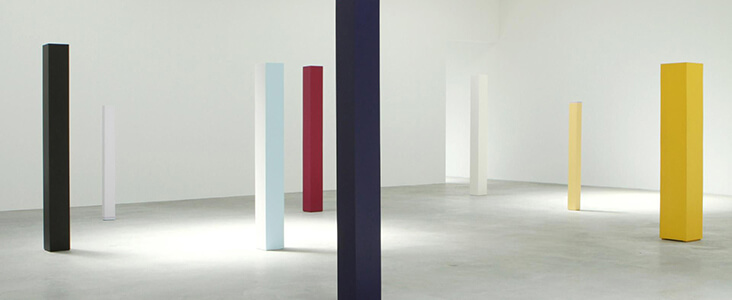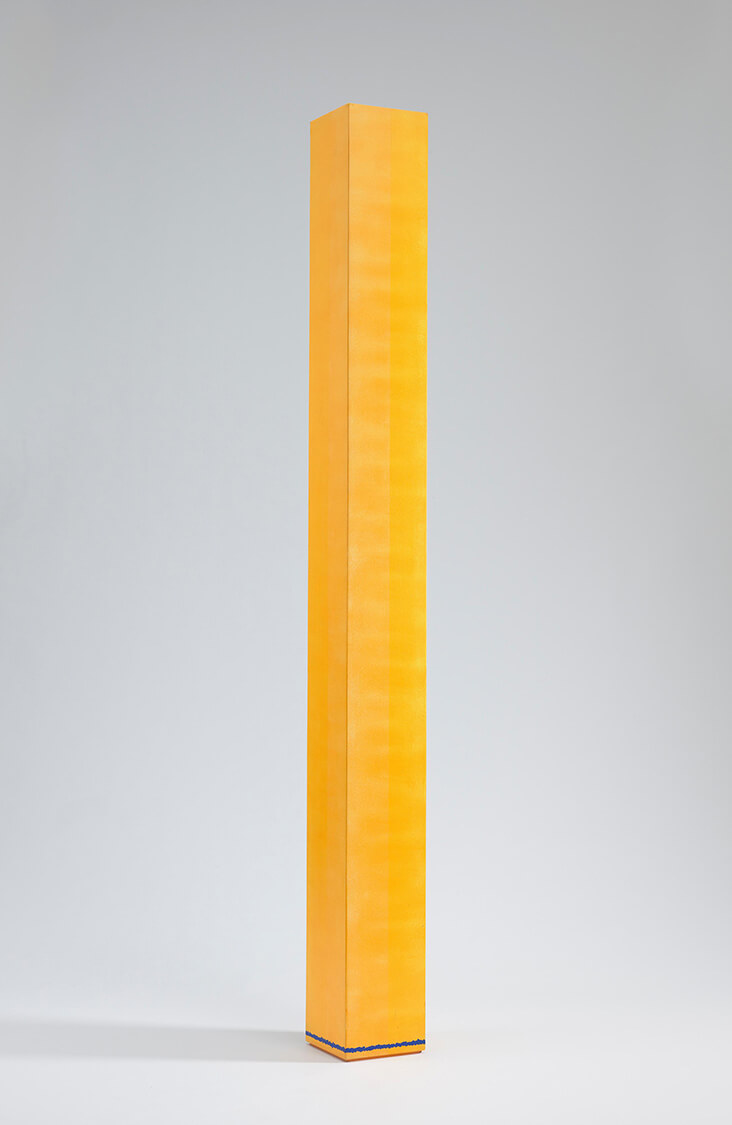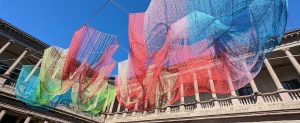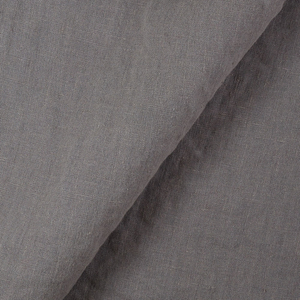Living an Inside Life: Anne Truitt and Motherhood
Leading American sculptor Anne Truitt is widely recognised as a singular figure in the Washington Colour School of the mid-20th century, whose monumental columns of colour are steeped with intense human emotion. She successfully weaved her family life into this artistic practice, exploring how the two could feed creatively and intuitively into one another. At the peak of her career, Truitt almost single-handedly raised three daughters, and it wasn’t always easy, but she proved it was certainly possible. From the 1970s onward she published a series of sensitively observed journals that chronicled the ups and downs of juggling career and motherhood, giving us a unique insight into her working patterns. For Truitt, the ultimate sacrifice was shutting out the external world and making time for what she called an “inside life”, that of her intimate family circle, as much as her inner world of thought.
As a young woman, Truitt was led to believe she would never have children. In the late 1930’s, while a psychology student at Bryn Mawr College in Pennsylvania, a severe case of appendicitis led doctors to mistakenly diagnose her as infertile. This sobering realisation led Truitt into a period of profound grief, but she found drawing to be a form of freeing salvation. Truitt continued down the path of psychology for some years, but self-expression through writing and drawing was always there as a background interest, one that was gradually beginning to sprout roots and leaves.
After marrying her husband James and moving to Washington in 1947, Truitt abandoned her psychiatry career to pursue art. She took up several courses on sculpture, and began working with a wide range of materials including clay, wood, metal, cement and stone. This time led Truitt to moments of real breakthrough, and in the next few years she began making her tall, slender and minimal sculptures influenced by the colour and light of her childhood in Maryland. It was a complete surprise when Truitt fell pregnant with her first child in 1955, and in the next few years she went on to have a further two children. This period of her life would become the busiest yet – just as she was finding her mature style as an artist and gaining regular gallery exhibitions, she was also heavily focused on raising her young family.
Things became even more challenging when Truitt and her family relocated to Japan in 1964 to follow her husband’s work. Truitt was completely out of her comfort zone, and her work took a knock, as she struggled to connect with the unfamiliar surroundings. It was during this time that cracks first began to appear in Truitt’s marriage, and following their return to the United States, in 1969 they divorced, leaving Truitt in sole custody of her three children. She settled in Washington and found teaching work at the University of Maryland to sustain her while struggling to continue making art whenever possible. She remembered back the dichotomy between external pressures and internal thoughts, writing in her journal, “I worked between carpools and buying food and cooking and whatever else I had to do. I lived an outside life, but really I was living an inside life.”
For Truitt, one way of managing was to almost shut out the external world, so she could conserve as much energy as possible for thinking about and making art. She recalled, “It’s extremely difficult and you have to make sacrifices … You can’t have it all. You can’t. In a way, you can’t have much of a personality or anything because everything has to go into your work.” Friends of Truitt’s have sometimes spoken of her quietly introspective, monk-like demeanour, which was in stark contrast to so many of the exhibitionist artists all around her. Truitt wasn’t one to shout loudly about her art, but her inner spirit and drive was ultimately enough to propel her into the international spotlight as she reached her sixth and seventh decades.
Truitt’s published diaries from the 1970s and 1980s offer the greatest insight into her way of life, and they prove the intensity and dedication she applied to both her family and her career as an artist. These diaries began as an intimate form of therapy that helped Truitt to manage her emotions during difficult times, and they reveal just how profoundly spiritual she was as a writer and thinker, as much as an artist. Family, she insisted, always came first, as she explains, “People sometimes ask me if I feel as if my sculptures were my children. I do not. The love I feel for my children is unique … nothing is comparable.” But it’s also clear that Truitt saw the two strands of her life, as mother and artist, to be intrinsically linked. She wrote, “… it occurs to me … that (my children) are transformations of secret, silent resources similar to those out of which my sculptures emerged.”




















































3 Comments
Laura Raymond
I LOVE these introductions to artists and so appreciate the way they connect and inform with the art of the linen business! They’re inspiring, and yes, give me ideas. Thank you for putting them out there.
Lesia McQuade
Rosie, thank you for this article on Anne Truitt. I can relate to her dedication to family, balancing work, and still answering that call to create. Thank you for all your articles on artists. I enjoy reading them very much.
Sonja Thomas
Your writing is fascinating about such a wide range of women. I must admit it is a huge surprise to read such great posts on a fabric blog. Well done!